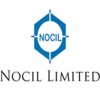Filter interviews by
Clear (1)
Deepak Phenolics Safety Officer Interview Questions and Answers
Deepak Phenolics Safety Officer Interview Experiences
2 interviews found
(1 Question)
- Q1. What is the role and responsibilities of safety officer
What is Base behaviour of safety
Top trending discussions






Interview questions from similar companies

I applied via Job Fair and was interviewed before Jun 2021. There were 2 interview rounds.
(1 Question)
- Q1. What is this company policies
- Ans.
The company policies cover various aspects of safety including workplace safety, emergency response, and personal protective equipment.
The company has a zero-tolerance policy for workplace accidents and injuries.
All employees are required to undergo safety training and follow safety protocols.
Emergency response plans are in place for various scenarios such as fire, natural disasters, and medical emergencies.
Personal pr...
(1 Question)
- Q1. Big round , good skills product knowledge
Interview Preparation Tips
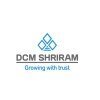
I applied via LinkedIn and was interviewed in Sep 2022. There were 2 interview rounds.

(4 Questions)
- Q1. What is fire Releted questions
- Ans. Plants in fire protection system provided
- Q2. Safety management ralted
- Ans. Safety management all safety rules nill tolerance
- Q3. Fire protection system
- Ans. Fire fighting system provided and location
- Q4. Company hazard regards rules
Interview Preparation Tips
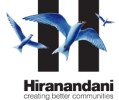
I was interviewed in Mar 2017.
Interview Questionnaire
2 Questions
- Q1. What will b your safety requirements
- Ans.
Safety requirements for a Safety Officer include training, equipment, inspections, and emergency preparedness.
Training programs for employees on safety procedures and protocols
Proper safety equipment and personal protective gear for employees
Regular inspections of the workplace to identify and address potential hazards
Emergency preparedness plans and drills to ensure prompt response in case of accidents or emergencies
- Q2. How u will safeguard all worker's
- Ans.
To safeguard all workers, I will implement comprehensive safety protocols, provide training and education, conduct regular inspections, and promote a culture of safety.
Implementing comprehensive safety protocols to address potential hazards and risks
Providing regular training and education on safety procedures and practices
Conducting regular inspections to identify and rectify any safety issues
Promoting a culture of sa...
Interview Preparation Tips
Experience: It was good
Tips: Don't b frustrated
Round: HR Interview
Experience: It was good
Tips: Don't b frustrated

I was interviewed in Jun 2017.
Interview Questionnaire
14 Questions
- Q1. WHAT IS SAFETY?
- Ans.
Safety is the practice of preventing accidents, injuries, and harm to people, property, and the environment.
Safety involves identifying and assessing potential hazards.
It includes implementing measures to control and mitigate risks.
Safety requires promoting awareness and providing training to prevent accidents.
It involves enforcing safety regulations and policies.
Safety also involves conducting regular inspections and ...
- Q2. HOW DO YOU ATTAIN 100% SAFETY?
- Ans.
Achieving 100% safety is not possible, but it can be approached through a combination of proactive measures and continuous improvement.
Implementing comprehensive safety policies and procedures
Providing regular safety training and education
Conducting thorough risk assessments and hazard identification
Promoting a safety culture and encouraging employee involvement
Regularly inspecting and maintaining equipment and facilit...
- Q3. ON SITE DIFFERENT PEOPLE FROM DIFFERENT COUNTRIES WORK HOW DO YOU THINK YOU CAN HANDLE THEM ON SITE?
- Ans.
I believe in promoting diversity and fostering a culture of respect and understanding among all team members.
Promote diversity and inclusion through training and awareness programs
Encourage open communication and mutual respect among team members
Address any conflicts or misunderstandings promptly and fairly
Lead by example by demonstrating respect for all team members
Celebrate cultural differences and promote a sense of
- Q4. IF ANY LABOUR MAKES AN ARGUMENT WHAT IS YOUR NEXT STEP TO PREVENT THAT?
- Ans.
To prevent arguments from labor, I would focus on effective communication, conflict resolution, and creating a positive work environment.
Promote open and transparent communication channels
Encourage active listening and empathy
Implement conflict resolution strategies
Provide training on effective communication and conflict management
Establish clear expectations and guidelines for behavior
Foster a positive work culture an...
- Q5. IF IN A NON SMOKING ZONE ANY OFFICAL IS SMOKING WHAT PRECAUTIONS WILL YOU TAKE TO PREVENT THAT UNSAFE SITUATION?
- Ans.
As a Safety Officer, I would take the following precautions to prevent an unsafe situation if an official is smoking in a non-smoking zone.
Approach the official calmly and politely remind them that they are in a non-smoking zone.
Explain the potential risks and hazards associated with smoking in a non-smoking zone.
Offer alternative designated smoking areas or suggest quitting smoking altogether.
If necessary, inform the ...
- Q6. HOW DO YOU INTERPET THE UN SAFE SITUATION WITH THE HELP OF SIGNS?
- Ans.
Interpreting unsafe situations with signs involves understanding and analyzing the meaning of various signs and their implications.
Familiarize yourself with common safety signs and their meanings
Observe and interpret signs to identify potential hazards or unsafe conditions
Consider the context and location of the signs to understand the specific risks
Use signs as indicators to take appropriate safety measures or precaut...
- Q7. WHAT ARE THE EASY WAY TO ESTABLISH A SAFE SITUATION ON SITE?
- Ans.
Establishing a safe situation on site requires proper planning, communication, and implementation of safety measures.
Conduct a thorough risk assessment to identify potential hazards and develop appropriate control measures.
Ensure all workers are trained in safety procedures and have access to necessary personal protective equipment (PPE).
Implement clear and visible signage to indicate potential dangers and safety preca...
- Q8. IN NON SMOKING ZONE HOW DO YOU AVOID PEOPLE FROM SMOKING WHAT ARE THE PRECAUTIONS?
- Ans.
To prevent people from smoking in a non-smoking zone, implement clear signage, enforce strict penalties, conduct regular inspections, and provide designated smoking areas.
Install prominent 'No Smoking' signs in visible locations throughout the non-smoking zone.
Educate and inform individuals about the non-smoking policy through announcements, brochures, or posters.
Enforce strict penalties for smoking violations, such as...
- Q9. ABOUT RISK ASSESSMENT?
- Q10. HOW DO YOU AUDIT A NEW SITE ?
- Ans.
To audit a new site, conduct a thorough inspection of the premises, review safety policies and procedures, assess potential hazards, and ensure compliance with safety regulations.
Inspect the premises for any potential safety hazards such as faulty equipment, inadequate signage, or unsafe working conditions.
Review safety policies and procedures to ensure they are comprehensive, up-to-date, and in compliance with relevan...
- Q11. CURRENTLY IN THIS ROOM WHAT ARE THINGS YOU FIND WHICH ARE UNSAFE?
- Ans.
There are several unsafe things in the room.
Exposed electrical wires near the desk
Slippery floor due to a spilled liquid
Blocked emergency exit by a chair
Overloaded power strip
Lack of proper ventilation
- Q12. WHAT ARE THE PRECAUTIONS YOU MAKE TO AVOID UNSAFE CONDITIONS IN THIS ROOM?
- Ans.
To avoid unsafe conditions in this room, I take several precautions.
Regularly inspect and maintain safety equipment
Ensure proper storage and handling of hazardous materials
Implement and enforce safety protocols and procedures
Provide adequate training and education to staff
Conduct regular safety drills and exercises
- Q13. WHAT IS YOUR PREVIOUS SALARY
- Ans.
I am not comfortable disclosing my previous salary.
It is not appropriate to discuss previous salary in an interview
Focus on the value I can bring to the role rather than past compensation
Salary expectations should be based on the current market rate and the responsibilities of the position
- Q14. HOW MUCH DO YOU EXPECT
Interview Preparation Tips
Experience: AS PER QUALIFICATION ,EXP AND AGE
Round: Technical Interview
Experience: I HAVE GIVEN THE ANSWERS UP TO THE MARK PRECISELY FINALLY SELECTED
Round: CERTIFICATE VERIFICATION
Experience: THEY WILL VERIFY YOUR ORIGINAL CERTIFICATES AND ALSO ALL THE ATTESTATIONS .FINALLY THEY HAVE TO CONCLUDE THAT THEY ARE ORGINAL AND FINALLY PROCEED TO HR INTERVIEW.
Round: HR Interview
Experience: IT WENT ON SMOOTHLY THEY ARE VERY STINGY IN PROVIDING GOOD PACKAGE BUT BE WISE WITH THEM THINK BEFORE YOU ASK ABOUT YOUR ALLOWANCES FAMILY VISA EVERYTHING BE PRECIE IN EACH AND EVERY ASPECT.
Skills: TECHNICALLY ALL ASPECTS REQUIRED FOR JOB

I applied via Recruitment Consultant and was interviewed before May 2017. There were 6 interview rounds.
Interview Questionnaire
7 Questions
- Q1. Tell About Self Background and current activities
- Ans.
I have a background in occupational health and safety with experience in conducting safety audits and implementing safety programs.
Completed a Bachelor's degree in Occupational Health and Safety
Currently working as a Safety Officer at XYZ Company
Conduct regular safety audits to identify potential hazards
Implement safety programs to ensure compliance with regulations
Train employees on safety procedures and protocols
- Q2. Experience sharing of previous company
- Ans.
I have 5 years of experience as a Safety Officer in a construction company.
Implemented and monitored safety procedures to ensure compliance with regulations
Conducted regular safety inspections and audits to identify potential hazards
Provided safety training to employees on proper procedures and equipment usage
Investigated and documented any accidents or incidents to prevent future occurrences
- Q3. Safety Related questions (Carefully understand the question asked and reply if you know answer well otherwise skip if don't know without hesitation. Answer the question in English is mandatory.)
- Q4. Technical scenarios to check understanding level
- Q5. Incident/ Accident Report writing
- Q6. Conduct 5 - 10 minutes of Safety given topic tool box talk
- Q7. Expectation of Salary
- Ans.
My salary expectation is based on my experience, qualifications, and the responsibilities of the role.
Consider the average salary range for Safety Officers in the industry
Factor in your level of experience and qualifications
Highlight any additional skills or certifications that may warrant a higher salary
Be open to negotiation based on the specific responsibilities of the role
Interview Preparation Tips
Experience: Eligibility : Educational (Graduation Required - Bsc/ Dip in Mech,civil,chemistry)
Technical qualification : Diploma in fire and safety, Osha 30 hrs, IOSH, NEBOSH in advantage
Experience - 0-1 yrs atleast in Oil and Gas refinery work in Safety feild.
Round: Final Selection
Experience: Term and condition discussed with consultant towards with offer letter
facility about accomodation /food/travelling provided by company
Contract signed by candidate
General Tips: Prepare for our self with formal dress to be professional
remove the hesitation from mind that going to face the interviewer.
Sharing the experience and describe myself as interview get me listen.
physical behavior about to enter prior to cabin ask them
Skills: Communication, Body Language, Analytical Skills, Presentation Skills, Decision Making Skills
Duration: <1 week

I was interviewed in Jul 2017.
Interview Questionnaire
2 Questions
- Q1. Tell about your work experience
- Ans.
I have 5 years of experience as a Safety Officer in the construction industry.
Implemented and monitored safety procedures on construction sites
Conducted regular safety inspections and audits
Provided safety training to employees and contractors
Investigated accidents and near misses to identify root causes
Maintained safety records and reports
- Q2. Document verification
Interview Preparation Tips
Experience: HR Mr.Vijayaragavan asked about my work experience , family background and screening my educational qualifications
Tips: very basic questions
Round: Chairman interview
Experience: Hindustan group chairman Mr.vergese asked detailed questions about my previous experience, case studies . development plans .
then sir asked about relocation to padur . i agreed to stay free with food & accommodation
Tips: selection round
Skills: General Awareness, Industrial Quality Control, Honesty
Safety Officer Interview Questions & Answers
Suvarna Electricalsposted on 26 Jan 2018
I applied via Times Job and was interviewed in Jan 2018. There were 5 interview rounds.
Interview Questionnaire
4 Questions
- Q1. Salary expectations and in which city you have to work
- Ans.
I am looking for a competitive salary based on my qualifications and experience. I am open to working in any city for the right opportunity.
I am seeking a salary that is competitive and reflective of my qualifications and experience
I am flexible with regards to the city I work in, as long as it is the right opportunity for me
I am open to discussing salary and location further in order to reach a mutually beneficial agr
- Q2. Only above
- Q3. In which company you had to worked.
- Ans.
I have worked in XYZ Company as a Safety Officer for 5 years.
Worked in XYZ Company for 5 years as a Safety Officer
Implemented safety protocols and procedures to ensure a safe work environment
Conducted regular safety inspections and training sessions for employees
Collaborated with management to address safety concerns and improve safety measures
- Q4. Without loosing confidence
Interview Preparation Tips
Experience: Depending upon personal information, qualifications, work experience and others.
General Tips: Jobseeker must give an interview with confidently with maintain good mind and always alert
Skills: Quick Learning, Communication, Body Language, Problem Solving, Analytical Skills, Leadership, Presentation Skills, Time Management, Decision Making Skills
Duration: <1 week

I applied via Naukri.com and was interviewed in Dec 2017. There were 4 interview rounds.
Interview Questionnaire
3 Questions
- Q1. Tell me about your self
- Ans.
Experienced safety officer with a background in industrial safety protocols and emergency response procedures.
Over 5 years of experience in implementing safety measures in industrial settings
Proficient in conducting safety audits and inspections to ensure compliance with regulations
Skilled in developing and implementing safety training programs for employees
Strong knowledge of emergency response protocols and procedure...
- Q2. Duties of safety Officer
- Ans.
Safety Officers are responsible for ensuring the safety of employees in the workplace by implementing safety protocols and procedures.
Develop and implement safety policies and procedures
Conduct regular safety inspections and audits
Investigate accidents and incidents to determine root causes
Provide safety training to employees
Ensure compliance with safety regulations and standards
Maintain safety records and reports
- Q3. Working improvement
Interview Preparation Tips
Experience: Written test
General Tips: Expended
Skills: Self-Awareness
Duration: <1 week
Deepak Phenolics Interview FAQs
Recently Viewed
Tell us how to improve this page.
Deepak Phenolics Interviews By Designations
- Deepak Phenolics Safety Officer Interview Questions
- Deepak Phenolics Assistant Manager Interview Questions
- Deepak Phenolics Project Intern Interview Questions
- Deepak Phenolics Instrument Engineer Interview Questions
- Deepak Phenolics Executive Interview Questions
- Deepak Phenolics Executive Accountant Interview Questions
- Deepak Phenolics Deputy Manager Operations Interview Questions
- Deepak Phenolics Document Controller Interview Questions
- Show more
Interview Questions for Popular Designations
- Safety Supervisor Interview Questions
- Fire & Safety Officer Interview Questions
- Senior Safety Officer Interview Questions
- Safety Engineer Interview Questions
- Safety Manager Interview Questions
- Drug Safety Associate Interview Questions
- Safety Supervisor, Safety Officer Interview Questions
- Safety Executive Interview Questions
- Show more
Deepak Phenolics Safety Officer Interview Process
based on 2 interviews
Interview experience
Interview Questions from Similar Companies
Fast track your campus placements
Deepak Phenolics Safety Officer Reviews and Ratings
based on 2 reviews
Rating in categories
|
Senior Executive
114
salaries
| ₹0 L/yr - ₹0 L/yr |
|
Assistant Manager
92
salaries
| ₹0 L/yr - ₹0 L/yr |
|
Executive
83
salaries
| ₹0 L/yr - ₹0 L/yr |
|
Field Executive
37
salaries
| ₹0 L/yr - ₹0 L/yr |
|
Deputy Manager
34
salaries
| ₹0 L/yr - ₹0 L/yr |

Hindustan Organic Chemicals
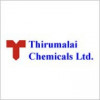
Thirumalai Chemicals
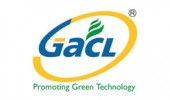
Gujarat Alkalies & Chemicals

DCM Shriram
- Home >
- Interviews >
- Deepak Phenolics Interview Questions >
- Deepak Phenolics Safety Officer Interview Questions







